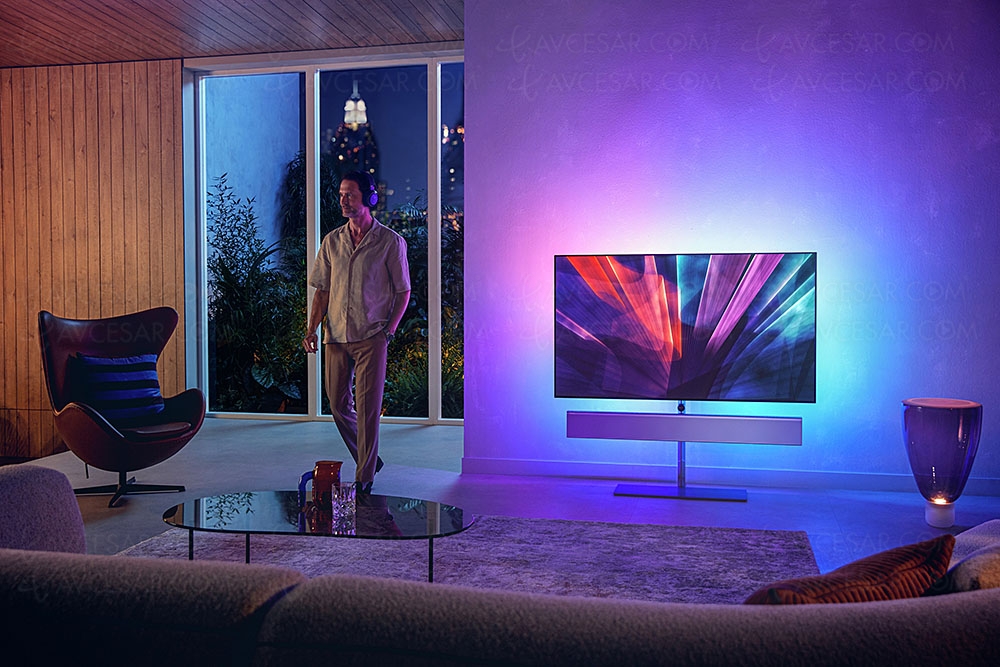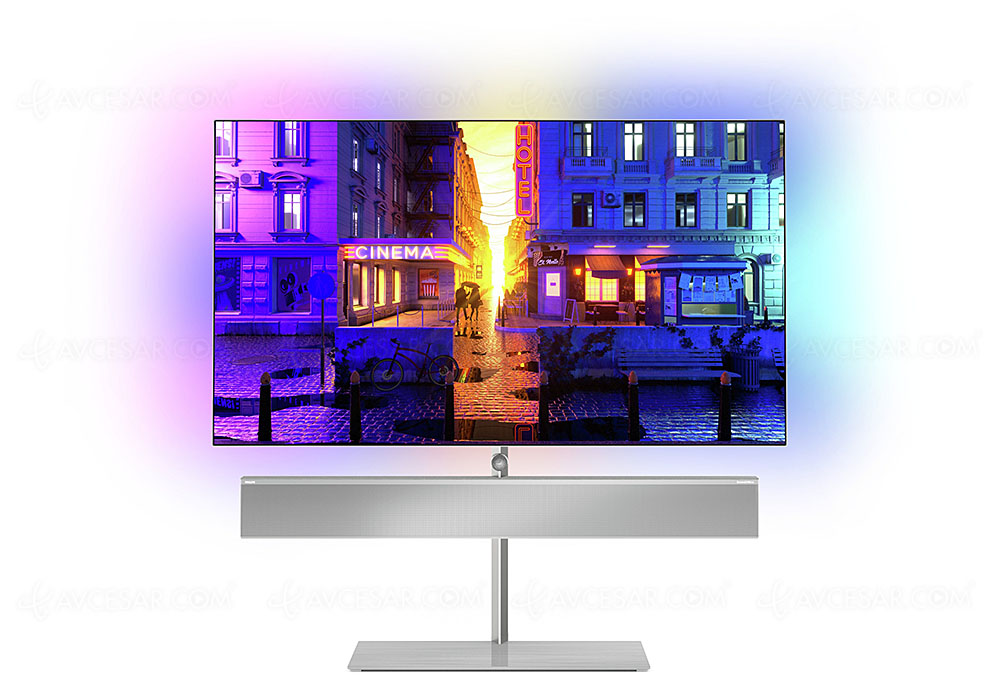
What new features for Philips OLED986 TVs?
New features compared to the 2019 model, and even compared to the Philips OLED806 televisions presented at the beginning of the year (see our news Oled Ultra HD 4K Philips OLED806: 48 '', 55 '', 65 '' and 77 approaching), are numerous. In short, the Philips 65OLED986 TV integrates all the developments listed on the Philips OLED936 TV series. First, there is the new generation Oled panel offered by LG Display (the one available on the Oled LG G1 said Evo TVs). The latter delivers up to 20% more light output depending on the displayed image. We also note the HDR10 + Adaptive compatibility which, as a reminder, uses the data provided by the TV light sensor to adapt the image to the environment. Thus, whatever the ambient conditions, the broadcast image will always be of optimal quality.
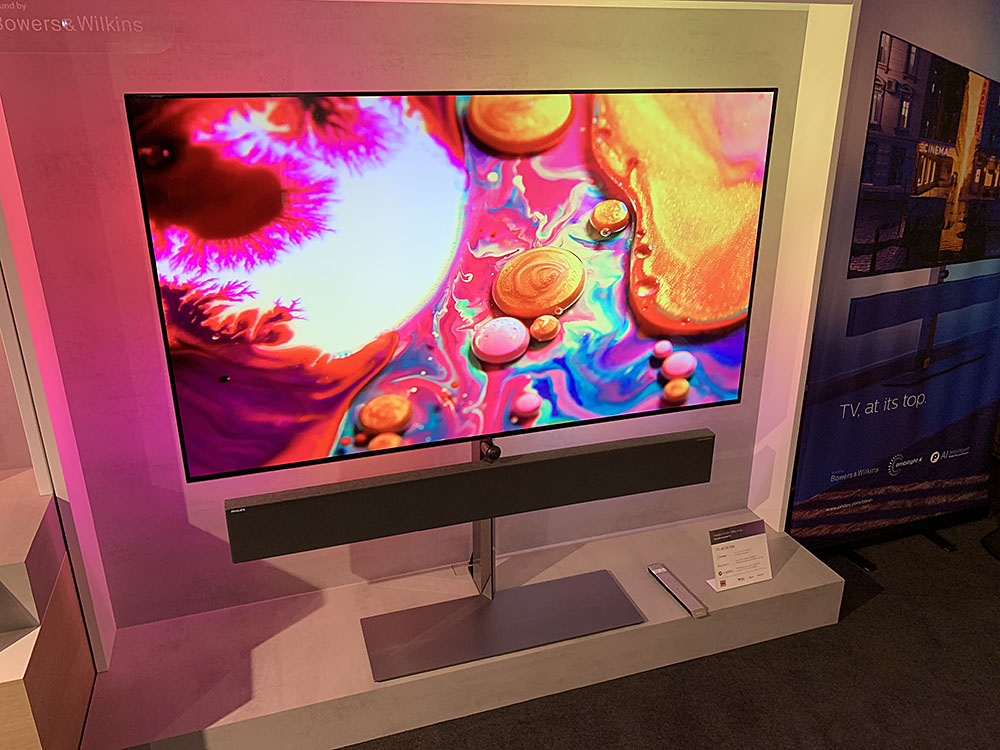
Another notable development, and because Oled technology is always subject to the phenomenon of Burn-in (especially during video game sessions, very aggressive content in terms of brightness), the presence of the anti-marking function designed by Philips based on a division of the screen into 32,400 zones in order to precisely detect the static parts of an image to gradually reduce their light intensity. This very efficient process is added to the functions embedded in LG Oled TVs for unparalleled peace of mind. Philips announces that this feature eliminates 95% of the risk of branding (including logos and gaming info). Associated with an Input Lag of only 11 ms, Philips Oled TVs could well establish themselves in 2021 as the best of their kind for video games. Especially when the year specifies that the management of Freesync Premium and G-Sync is part, ditto for the HDMI 2.1 connectors with a bandwidth of 48 Gbps, VRR (active from 48 Hz to 120 Hz), ALLM and Auto Game mode.
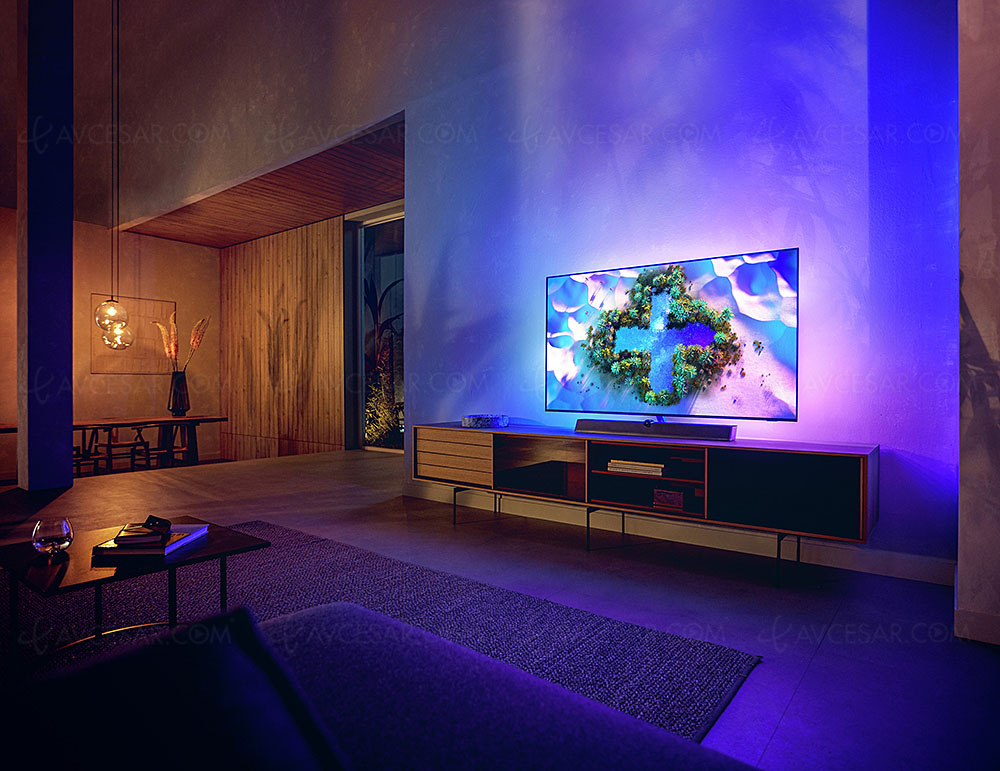
Still among the novelties of the Philips 65OLED986 TV, we still notice the Calman Ready function for an extremely fine calibration of the screens and the FMC function (Fast Motion Clarity equivalent to a BFI mode for Black Frame Insertion) for the insertion of black image without flickering according to Philips, for extreme fluidity and sharpness of moving images. It will be necessary to check whether its activation does not lead, as for LG TVs, to a significant darkening of the image.
Philips P5 Dual Mode processor
But the most spectacular change proposed by the Philips OLED986 TV is the presence of a brand new P5 Dual Engine processor, different from that present in the Philips OLED806 and Philips OLED856 televisions unveiled earlier this year. The one embedded in OLED986 TVs consists of two chips to significantly increase its computing power and thus proposed several new algorithms. The first is called AI Smart Bit Enhancement 2.0 and aims to reduce the phenomenon of Banding on SD images without loss of details thanks to an internal 14-bit conversion (like the Super Bit Mapping process signed by Sony). The second is called AI Machine Learning Sharpness and allows increased sharpness on only part of the image, the rest of the screen benefiting from separate settings. This dynamic image management is a guarantee of optimal overall quality. For its part, the Perfect Natural Reality mode is present here in its advanced version: Philips announces a natural sharpness up to 30% thanks to better management of highlights and improved contrast.
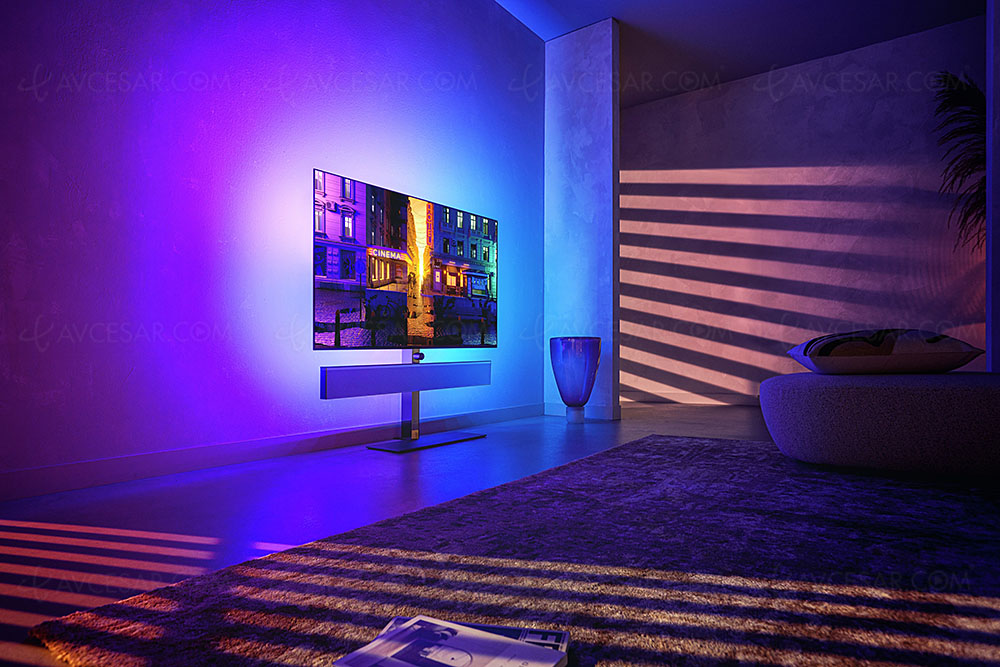
Directly linked to the P5 Dual Engine processor, we can also mention the AI Content Classification and Ambient Intelligence functionalities. The first automatically detects the film content to give the viewer the choice of Filmmaker Mode (no P5 processing activated) or Home Cinema Mode (P5 processing active but in a skilful way so as not to distort the work). The second takes advantage of the data measured by a new light sensor present on the Phiips 2021 TVs to optimize the display of the SDR or HDR signal, and even HDR Dolby Vision via the Dolby Bright mode specific to Philips screens.
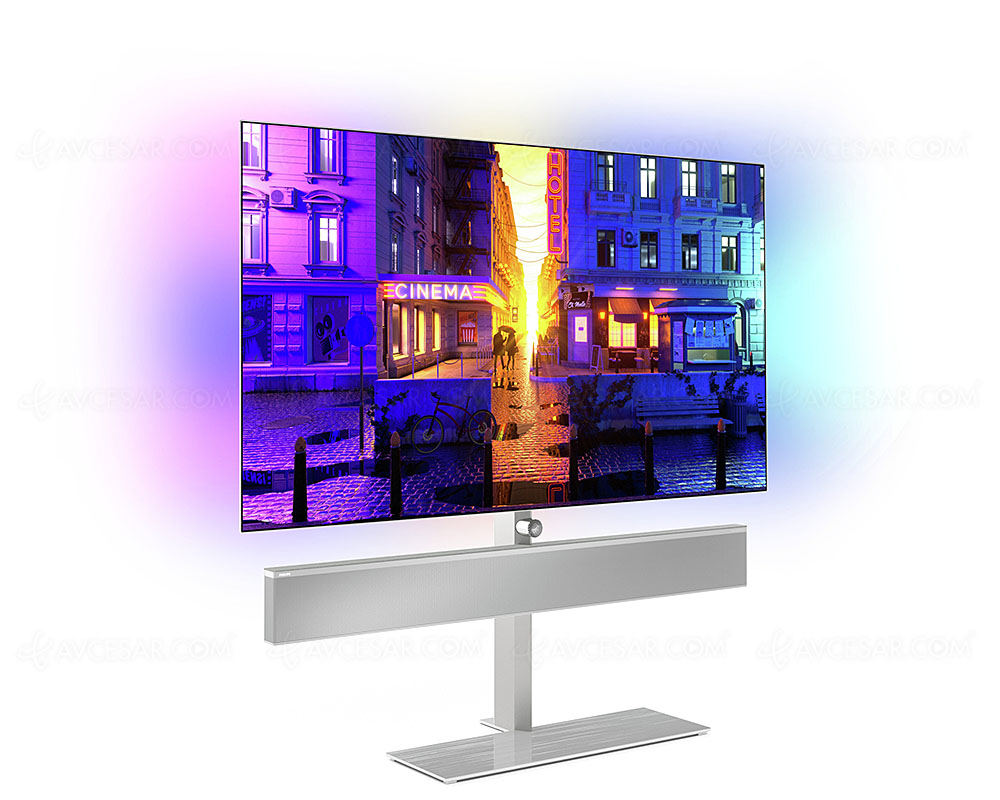
4-sided Ambilight and HDR10 / 10 +, HDR HLG and HDR Dolby Vision
Of course, the brilliant Ambilight process is still in place, but on all four sides here. And it is still possible to combine the TV with Philips Hue lamps for a picture, sound and light show at home. Likewise, compatibilities with HDR Dolby Vision, HDR HLG, HDR10 and HDR10 + / HDR10 + Adaptive technologies are present.
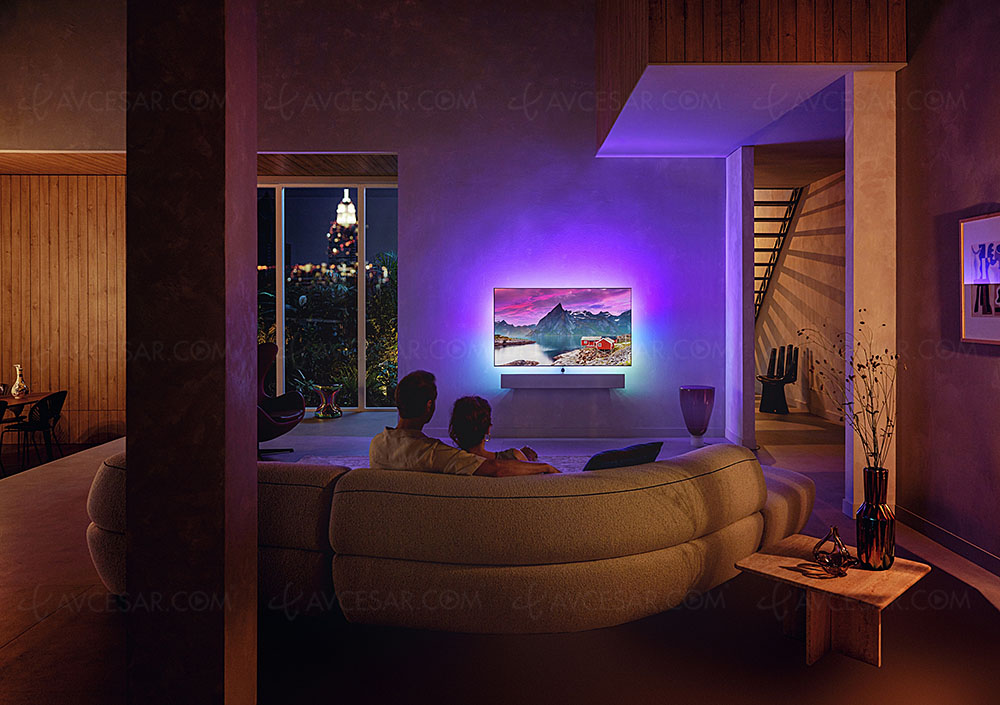
Dolby Atmos 3.0 soundbar from Bowers & Wilkins
The Philips OLED986 TV audio system, still from B&W, is also undergoing significant change. If the Tweeter-on-Top technology is still required (in the “unaffected†position and above the speaker as its name suggests) with a sound bar separate from the screen, attached to the TV stand , we note the arrival of the famous Continuum cone (used on the most prestigious Bowers & Wilkins speakers) on the 100 mm mid-woofer drivers.
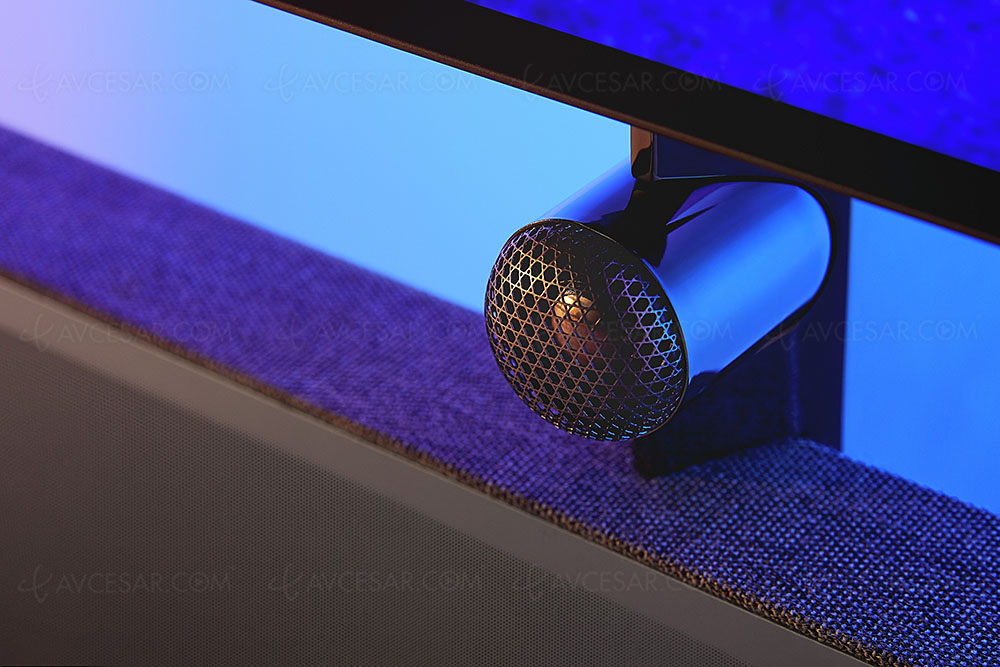
We also notice that the soundbar is made up of three isolated boxes (with a tweeter present in the right and left boxes) for an optimized frequency response and to avoid resonances. There are also new high-quality filtering components, not to mention the possibility of connecting an external subwoofer for more impact in the low frequencies. The total power delivered is 70 W and Dolby Atmos compatibility is also required. It is also possible, via the Film setting, to apply virtual Dolby Atmos processing to a classic audio signal.
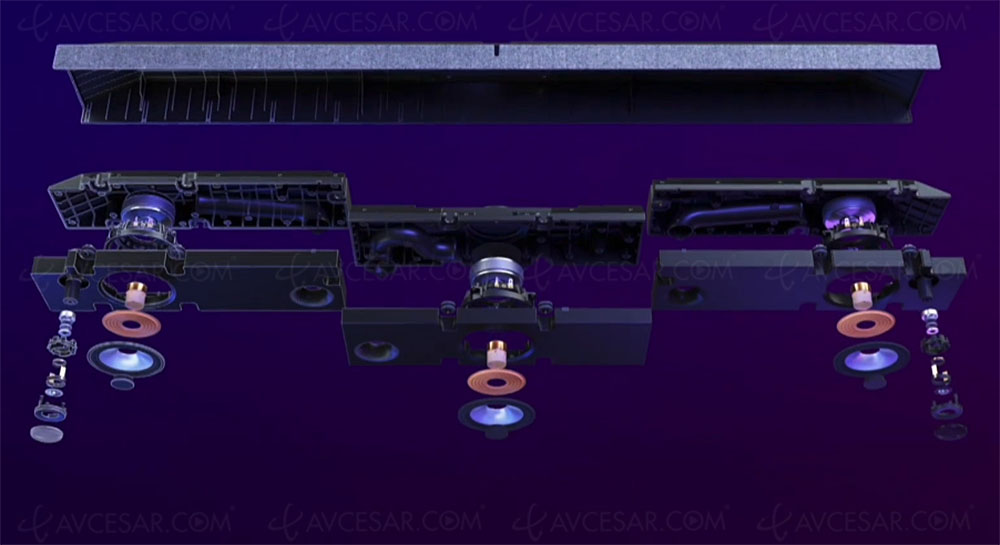
Finally, DTS Play-Fi certification (see our Philips and DTS Play-Fi partnership news: televisions, sound bars and wireless and multiroom speakers) allows the configuration of a 5.1 wireless home theater system. or the integration of TV into a multiroom system.
Android 10 Smart TV
The Android 10 Smart TV function is on the program. It of course offers access to the Google ecosystem directly from the TV screen (Google Play Store, Play Movies, Play Music, Google Chrome ...) but also to the Philips App Gallery service to install your favorite applications via 16 GB of Built-in Flash memory (expandable via USB), like a smartphone. Plus VP9 and ChromeCast compatibility to view content from a compatible smartphone / tablet on a large screen, not to mention Google Assistant and the “Works with Alexa†certification (need for an Amazon Echo Dot speaker).

The connection
As announced above, Philips OLED986 TVs offer four HDMI 2.1 connectors. An ideal configuration for video game enthusiasts, owners for example of a PlayStation 5 console, an Xbox Series X, and a gaming PC.
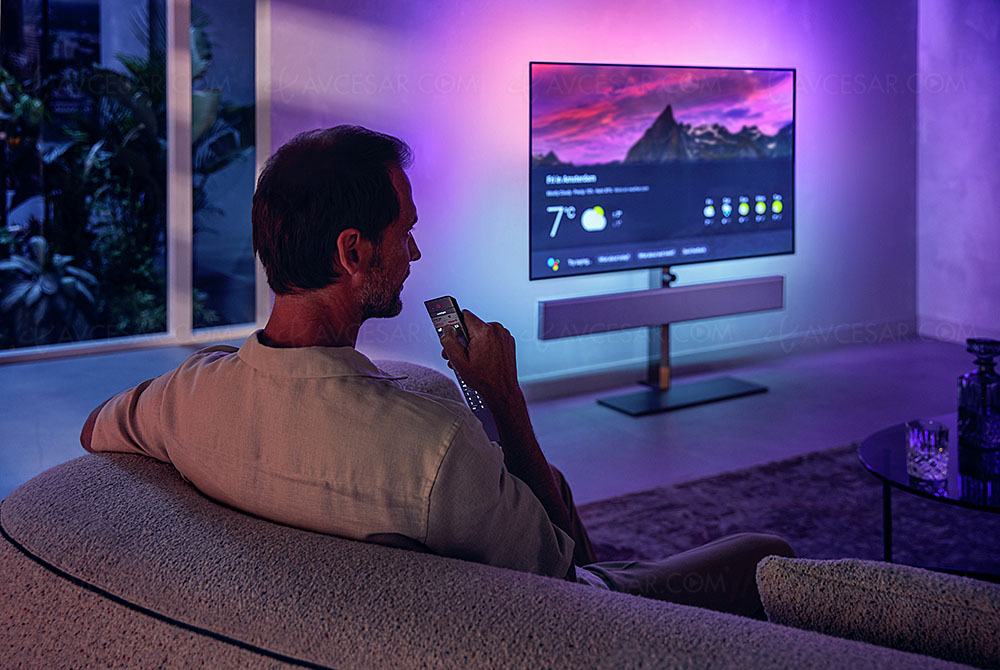
Availability of the Philips OLED986 expected at the end of September. Indicative prices: 4,999 euros.
Reminder of the key features of the Philips 65OLED986:
• 10-bit panel
• 100 Hz panel
• Oled panel
• Ultra HD / 4K panel
• Oled type Evo panel
• Processor: P5 Dual Engine
• Function P5 Perfect Sharpness Ultra Resolution
• Function P5 Perfect Contrast
• Function P5 Perfect Color (WCG, Wide Color Gamut)
• Ambilight + Hue function
• Amazon Alexa function
• Perfect Natural Reality function
• eARC function
• VRR function
• ALLM function (Auto Low Latency Mode)
• 4K HFR 120 function
• IA Machine Learn Sharpness function
• AI Smart Bit Enhancement 2.0 function
• AI Content Classification function
• Ambient Intelligence function
• 4-sided Ambilight function
• HDR10 and HDR HLG compatibility
• Bluetooth compatibility
• HDR10 + compatibility
• HDR Dolby Vision compatibility
• HEVC compatibility
}
• Dolby Atmos compatibility
• Wi-Fi ac Dual Band compatibility
• AV1 compatibility
• VP9 compatibility
• G-Sync compatibility
• DTS Play-Fi compatibility
• HDCP 2.3 compatibility
• HDR10 + Adaptive compatibility
• FreeSync Premium compatibility
• Filmmaker Mode certification
• Outputs: 1 optical
• Inputs: 4 HDMI 2.1, 1 YUV, 2 USB ports, 1 Ethernet port, 1 CI + port
• Multimedia Smart TV Android 9.0 (Pie)
• Amazon Alexa Multimedia
• Google Assistant Multimedia
• Perfect Natural Motion
• Input Lag: 12 ms
• Peak light: 1200 nits approximately
• Dual DVB-T2 tuner
• Dual DVB-S2 tuner
• Dual DVB-C tuner
• Sound section: 3.0
• Power: 60 W
• Other: Anti Burn-in system
